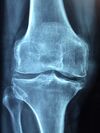Elizabeth A.L. Stine-Morrow, Ilber E. Manavbasi, Shukhan Ng, Giavanna S. McCall, Aron K. Barbey, Daniel G. Morrow,
"Looking for transfer in all the wrong places: How intellectual abilities can be enhanced through diverse experience among older adults,"
Intelligence, Volume 104, 2024, 101829, ISSN 0160-2896,...
- Abstract Imaging-based spatial transcriptomics technologies such as MERFISH offer snapshots of cellular processes in unprecedented detail, but new analytic tools are needed to realize their full potential. We present InSTAnT, a computational toolkit for extracting molecular relationships from spatial transcriptomics data at the intra-cellular resolution. InSTAnT detects gene pairs and modules...
- Abstract The prevalence of orthopedic implants is increasing with an aging population. These patients are vulnerable to risks from periprosthetic infections and instrument failures. Here, we present a dual-functional smart polymer foil coating compatible with commercial orthopedic implants to address both septic and aseptic failures. Its outer surface features optimum bioinspired mechano-...
- Abstract Three adult littermates were diagnosed with Brucella canis, two of which were diagnosed with discospondylitis. The first littermate, a 2-year-old spayed-female Labrador Retriever, was evaluated for progressive episodes of cervical pain, lethargy, reported circling to the right, and a right-sided head tilt. Magnetic resonance imaging (MRI) of the cervical spine...
- Abstract The bearded dragon (Pogona vitticeps) has become a popular companion lizard, and as such, clients have increasingly come to expect the application of advanced diagnostic and therapeutic options in their care. The purpose of this study was to establish an MRI-based protocol and brain atlas to improve diagnostic capabilities in bearded dragons presenting with neurologic...
- Abstract Current treatment options for feline epilepsy are limited to medications that require administration of multiple doses per day or administration of a capsule or large tablet. Expanding the current treatment options could improve patient and owner compliance and optimize seizure control. Topiramate has been used sparingly in veterinary medicine, and limited pharmacokinetic studies have...
- Abstract The cellular basis of age-related impairments of hippocampal function is not fully understood. In order to evaluate the role of somatostatin-positive (Sst+) interneurons in the dentate gyrus (DG) hilus in this process, we chemogenetically inhibited Sst+ interneurons in the DG hilus. Chronic chemogenetic inhibition (CCI) of these neurons resulted in increased c-Fos staining in the...
- Abstract Research indicates that eye movements can reveal expressions of memory for previously studied relationships. Specifically, eye movements are disproportionately drawn to test items that were originally studied with the test scene, compared to other equally familiar items in the test display - an effect known as preferential viewing (e.g., Hannula, Ryan, Tranel, & Cohen, 2007). Across...
- Abstract Contextual information plays a critical role in directed forgetting (DF) of lists of items, whereas DF of individual items has been primarily associated with item-level processing. This study was designed to investigate whether context processing also contributes to the forgetting of individual items. Participants first viewed a series of words, with task-irrelevant scene images (used...
- Abstract Psychological and neuroscientific experiments have established that people can intentionally forget information via different strategies: direct suppression and thought substitution. However, few studies have directly compared the effectiveness of these strategies in forgetting specific items, and it remains an open question if the neural mechanisms supporting these strategies differ....









